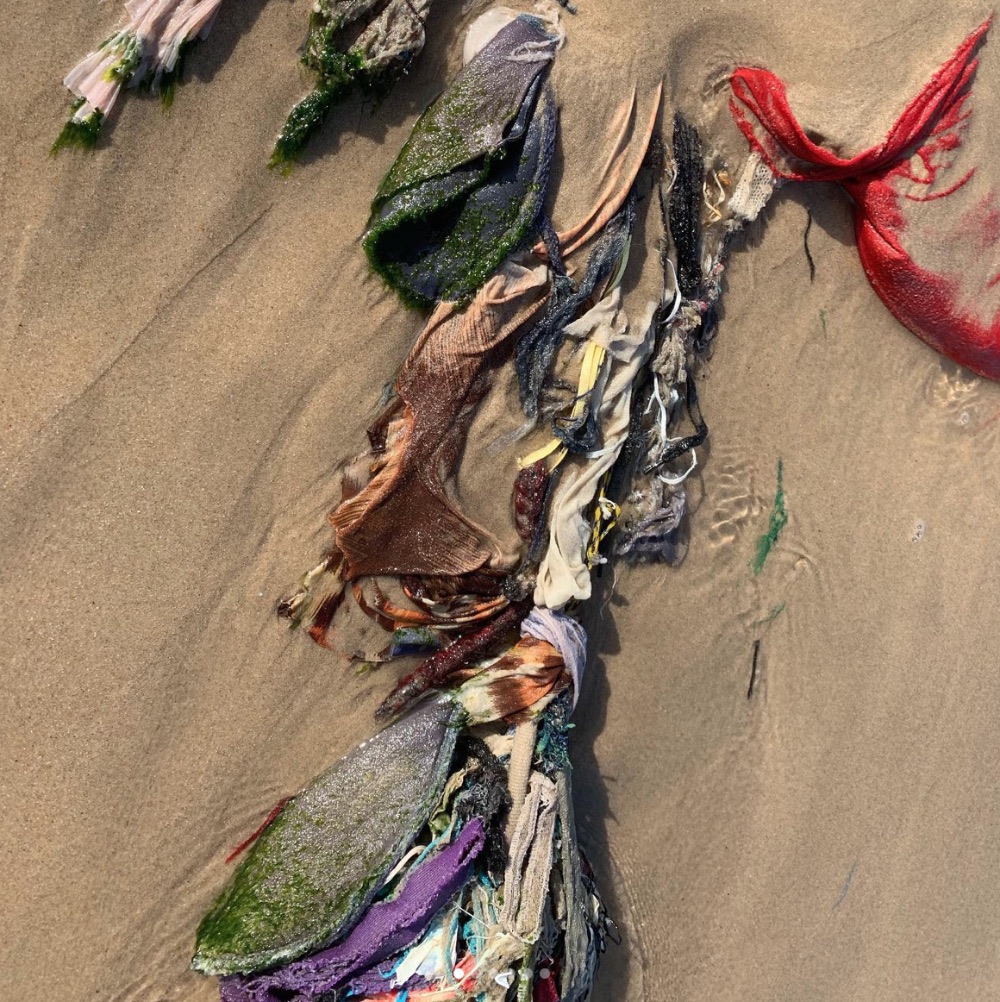It’s complicated – I do not have the answers, but my hope in writing my column as we close secondhand September is at least to explore some solutions and lay out some of the current debates about sustainability, particularly in fashion.
Responsibility
It can be exhausting to research every purchase you make. So sometimes, to see the word sustainable – which can cover a mix of positive actions toward the environment and climate change, biodiversity, and the welfare of animals and people – is reassuring enough.
But the sustainability spectrum is broad. Just this month, we heard the founder and owner of Patagonia announce that his family was transferring 98% of the company’s stock to a newly created not-for-profit organisation dedicated to combatting climate change. We also saw Kourtney Kardashian partner with the fast fashion brand Boohoo on a sustainable collection. When writing about the range of 46 limited-edition pieces of clothing, The Guardian reminds us that Boohoo uploads over 700 items on its website every week.
Compelled to keep clicking, I navigated to Boohoo’s website to look at where the collection was made and evidence of their press release promise to ‘inform our customers and empower them to make more informed choices.’ Unfortunately, personifying details like ‘I am made in Pakistan’ and a duvet coat for as little as £25 doesn’t instil trust that the collection is friendlier to the people making the clothes. A factory supplying Boohoo in Pakistan was among the most recent investigations that workers in poor conditions were receiving well below the legal minimum wage.
Rather than taking responsibility for its clothes’ end of life, Boohoo’s advice for customers to make informed choices is to ‘Think re-wear, re-sell, share, swap and donate.’ Re-wearing something doesn’t strike me as a revolutionary step towards sustainability unless Boohoo insists it’s producing one-wear wonders. Unsurprisingly they are not offering a take-back scheme when the materials in the range include polyurethane which Boohoo admits ‘can’t be recycled.’
So, what is the Government doing to enforce fashion brands to take responsibility?
The short answer is not enough. It rejected all 18 recommendations made in The Environmental Audit Committee’s Fixing Fashion report in 2019. However, a little hope can be found in the Green Claims Code published by the Competition and Markets Authority, with greenwashing investigations that target the fashion industry first instigated this year. Brands including Boohoo and ASOS are being scrutinised for making vague claims and suggesting clothes are more environmentally sustainable than they actually are.
Redistribute
Secondhand September has been awash with sustainability stories, and an investigation by The Daily Telegraph reinvigorated concern about the UK’s unwanted clothes cast away to Africa. Yet this latest expose found that rejected Oxfam (and other charities) donations ended up in the ocean as rubbish in Ghana. The newspaper reported that an estimated 40% of secondhand clothing exported to Ghana goes in streams, in dump sites or on beaches as stall holders in local markets struggle to sell poor quality or damaged clothing and the waste management systems struggle to cope with the quantities.
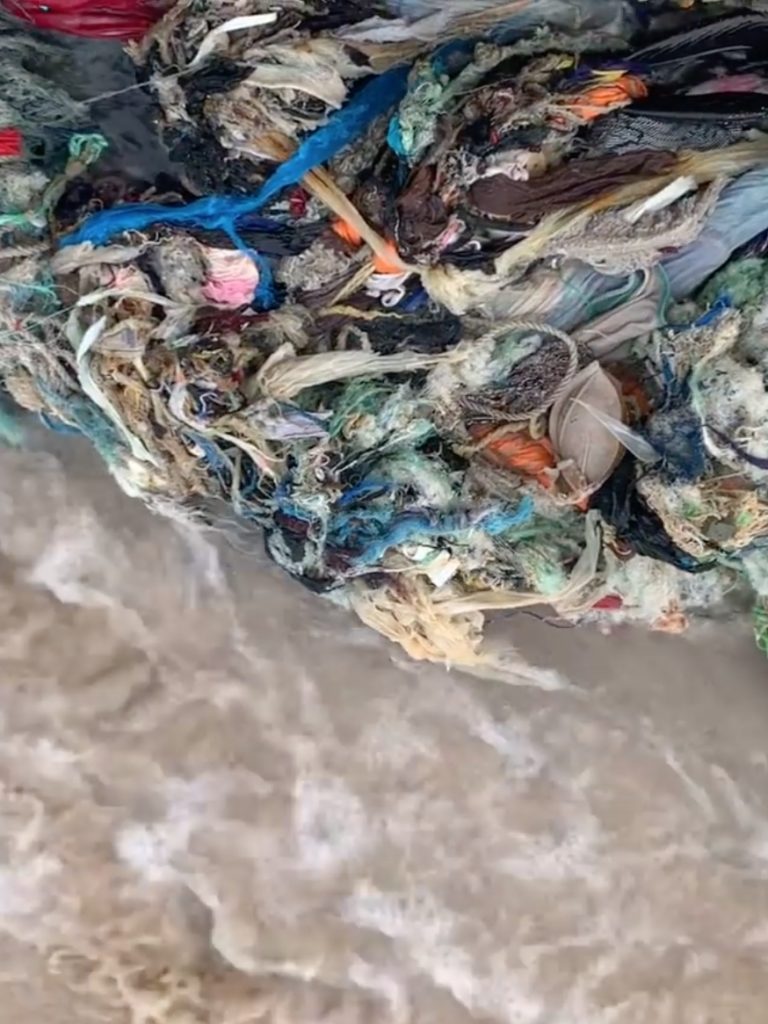
@theorispresent Instagram
I have grown frustrated with the unfulfilled promise of fashion resale platforms and press that suggests you can recoup your “investment” to give us permission to shop, sell and shop some more. Even Pretty Little Thing – owned by the Boohoo Group – just launched a resale marketplace, but providing these platforms doesn’t tackle the waste or make their strategy more circular. Clothes made of petrochemicals will be a problem for ecosystems for far longer than they’re likely to stay in a few people’s wardrobes.
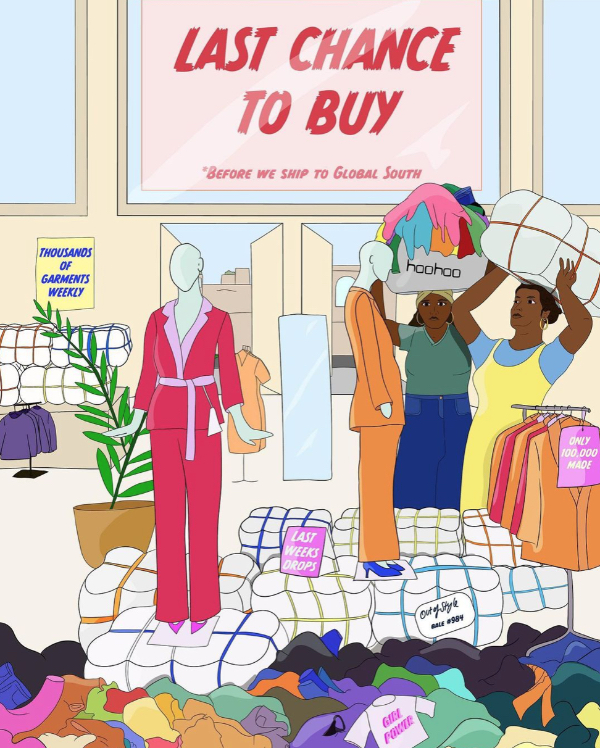
The Telegraph article gave me more fashion for thought by introducing the work of The Or Foundation, a charity working in Ghana, which is the largest importer of secondhand clothes. 15 million garments come into the country every week, and most initially go to Kantamanto, the market in the capital, Accra. The Or Foundation works for justice, and their Secondhand Solidarity Fund builds solutions from the frontline of fashion’s waste crisis. The charity states that for decades Kantamanto retailers and Kayayei, a Ghanaian term for female porters (who carry giant bales of clothes), ‘have laboured in the service of sustainability, recirculating far more clothes than any resale platform in the Global North, and yet they have received essentially no investment.’
Kantamanto stories are shocking. Unsold charity donations and items put into “recycling” bins sold to for-profit companies are sorted and bales are exported to sell to market stall holders, who buy them without knowing what is inside. Even if a bale is full of garments in an unsellable condition, there is no return policy here. However, Kantamanto is also a sign of hope as a resale and upcycling economy, with 30,000 individual entrepreneurs working together to recirculate over 25 million garments a month.
Reimagine
Upcycled fashion is one of my favourite responses to the drive for sustainability. Whilst in Brussels recently, I went to a fashion show at Recyclerie Sociale with recrafted pieces by different creative contributors including Emmanuel Cortés, whom Salvo worked with when he was at the cooperative design practice, Rotor. Recrafted fashion is a good nudge for architects to embrace visible reclamation and reuse artistically.
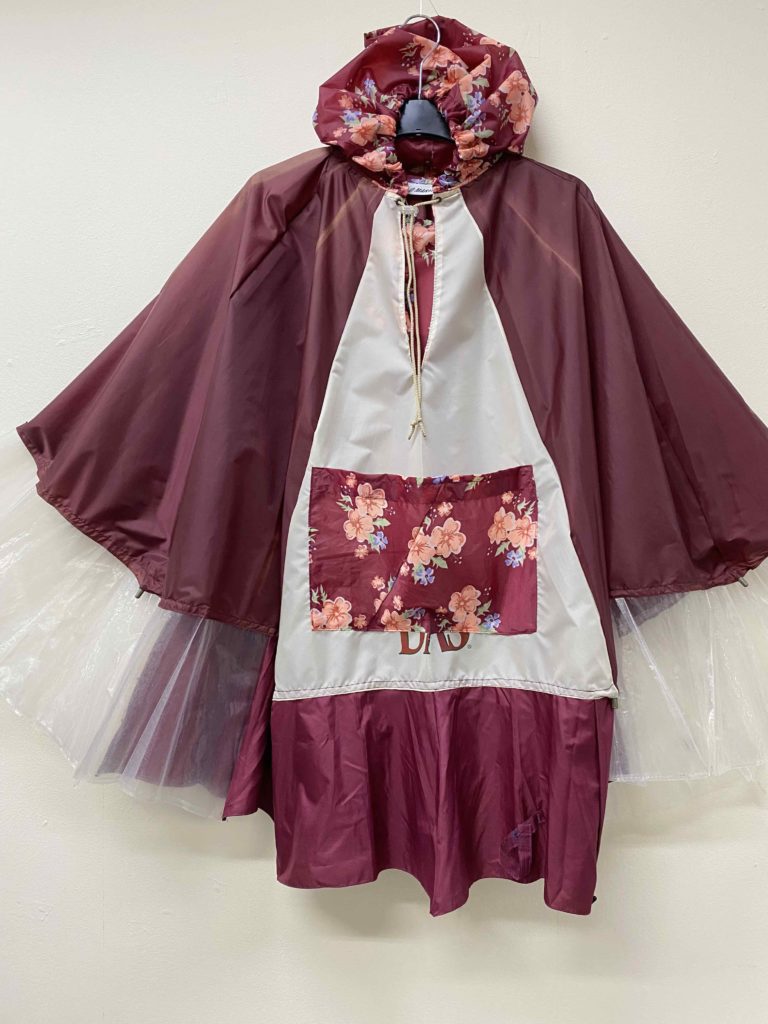
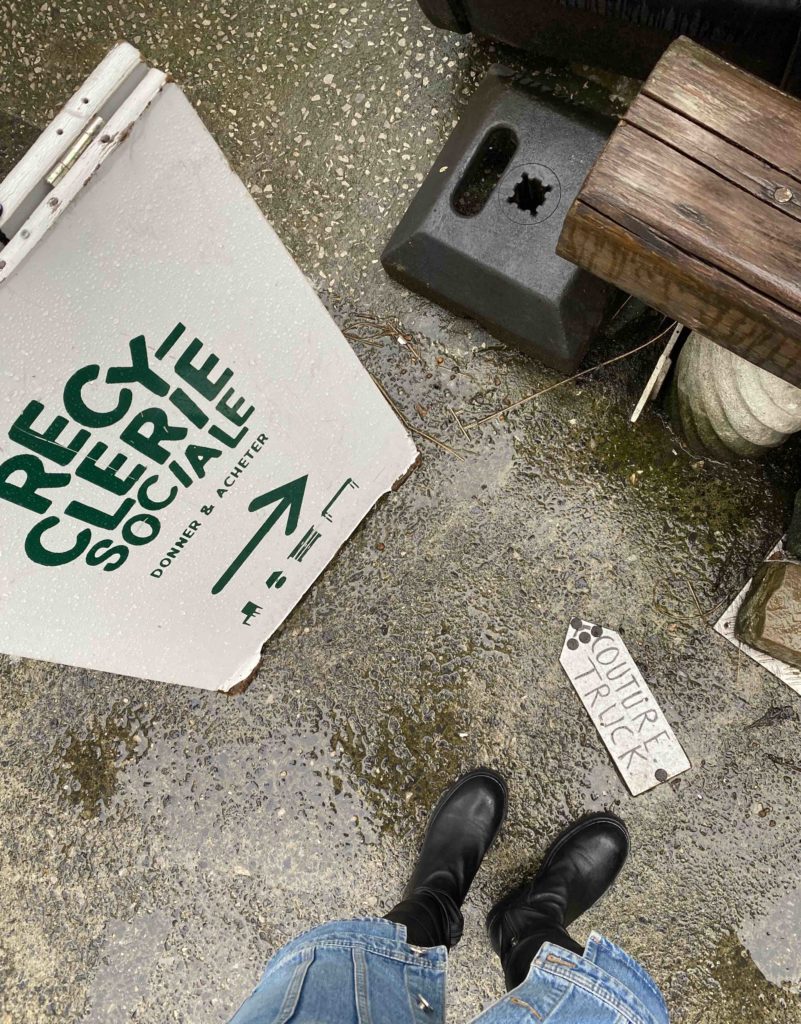
Redefine consumers as humans
Let us refer to ourselves as what we are, humans, because reducing us to consumers normalises the current throwaway culture, a way of life which accelerated since the post-war period when cheaper materials and mass production reduced the cost of consuming new things.
Wastefulness is arguably nurtured rather than part of our nature. Over the last century, many companies have increasingly baked obsolescence into their products to increase consumption. For example, today people are pushed to purchase new phones if their model is left behind by security updates or a new door to comply with regulations that discourage reclamation. Wearing a less fashionable style of jeans does not present the same sense of risk, but we are social animals, and our habits are influenced by one another. David Attenborough educated us about plastic pollution, but before that, mid-century ‘Mad Men’ influenced people by marketing the convenience of throwaway plastic cups. We are human; we are not perfect, but we can own our power and make positive steps towards sustainability.
How can I dress and act more sustainably?
- Despite some surprising reading, do not throw unwanted clothes in the rubbish as they are better off being sorted into their appropriate waste streams and hopefully recycled. Find your local textile recycling banks and collections.
- Think about what you want to donate, which charity shop your item suits and make sure it is clean because this avoids contaminating other garments and helps save the charity’s resources.
- If you have good quality workwear, you can donate womenswear to Smartworks (locations across the UK or donate by post) or menswear to Suited & Booted (located in London). Both charities provide interview training and interview clothes for people out-of-work. I volunteered as a dresser for Smartworks for many years and saw how the right clothes give people the extra confidence to change their circumstances.
- Try renting your fashion. Or try treating things in your wardrobe with care as if they are borrowed because they will last longer. What I like about the few times I have rented my clothes is the extra respect you give them.
- Buy smarter, buy secondhand and buy less. The carbon cost of clothes mainly comes from production so reuse significantly reduces emissions. Look at what you actually need because many people gravitate towards the same items (for me it’s jackets). Enliven forgotten pieces with proper planning about what goes with what so you know if you genuinely feel you need something.
- Look at what things are made of and where they are made. Certifications can be helpful to trust in what you are buying, but not all certifications are made equal. What constitutes “sustainable” cotton is highly debated. And remember, recycled fabric does not mean it is easily recyclable.
- Unless you are buying a very expensive accessory from a small number of brands that hold their value, a fashion purchase is not usually an economically good investment. But you can choose to invest in people by supporting designers behind smaller brands and the environment by shopping locally-made clothes or buying from brands that back up their commitment to sustainability measures that matter the most to you.
- Maintain, repair, alter or recraft your clothes. You can try apps like Sojo or seek repair and tailoring services at local dry cleaners.
One of the most powerful things we can do is write to our MPs and push the Government for regulation to mandate the largest retailers to take responsibility and incentivise reuse. Read ideas like reducing VAT on repair services in The Environmental Audit Committee’s Fixing Fashion report linked here.

© Photographs Reclaimed Woman and courtesy of The Or Foundation

